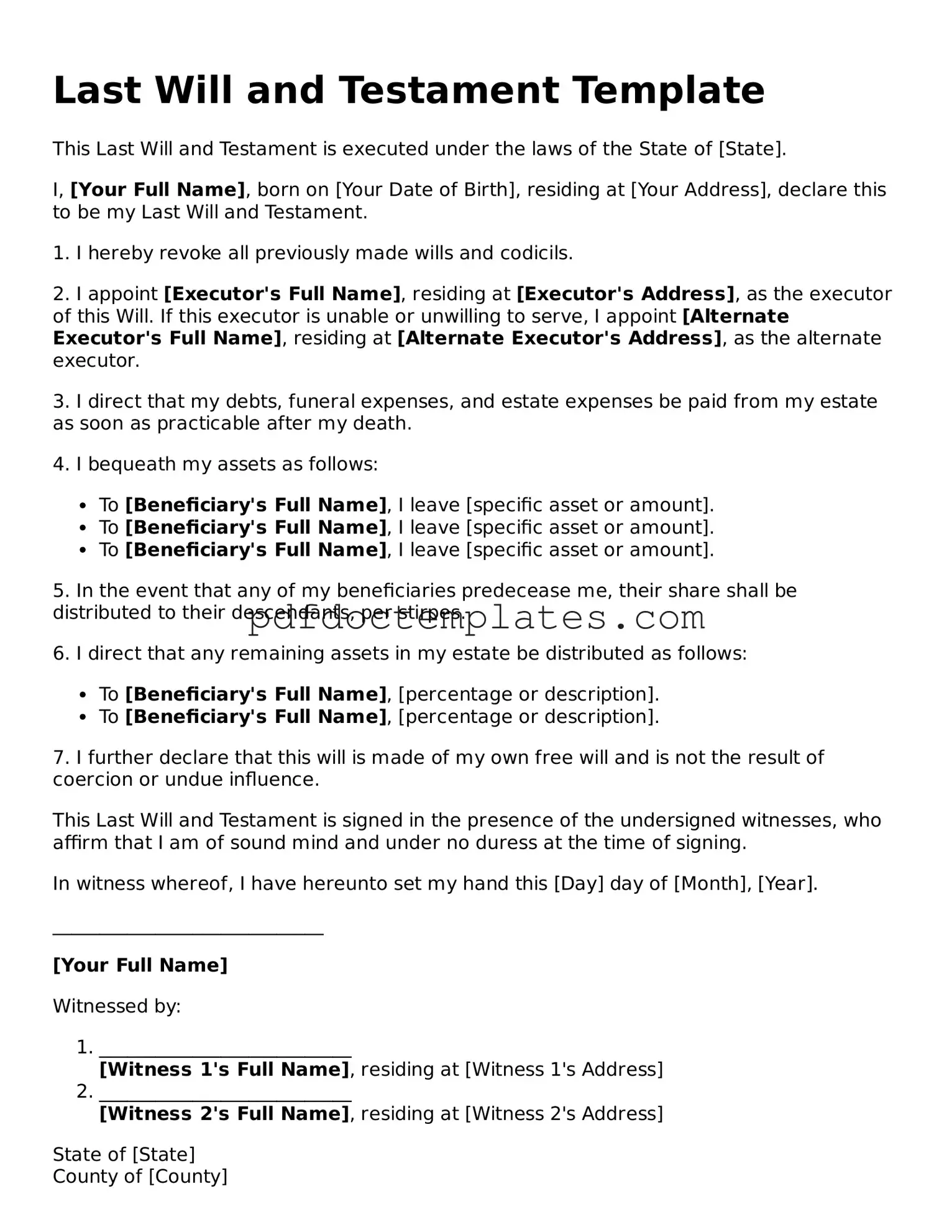Last Will and Testament Template
This Last Will and Testament is executed under the laws of the State of [State].
I, [Your Full Name], born on [Your Date of Birth], residing at [Your Address], declare this to be my Last Will and Testament.
1. I hereby revoke all previously made wills and codicils.
2. I appoint [Executor's Full Name], residing at [Executor's Address], as the executor of this Will. If this executor is unable or unwilling to serve, I appoint [Alternate Executor's Full Name], residing at [Alternate Executor's Address], as the alternate executor.
3. I direct that my debts, funeral expenses, and estate expenses be paid from my estate as soon as practicable after my death.
4. I bequeath my assets as follows:
- To [Beneficiary's Full Name], I leave [specific asset or amount].
- To [Beneficiary's Full Name], I leave [specific asset or amount].
- To [Beneficiary's Full Name], I leave [specific asset or amount].
5. In the event that any of my beneficiaries predecease me, their share shall be distributed to their descendants, per stirpes.
6. I direct that any remaining assets in my estate be distributed as follows:
- To [Beneficiary's Full Name], [percentage or description].
- To [Beneficiary's Full Name], [percentage or description].
7. I further declare that this will is made of my own free will and is not the result of coercion or undue influence.
This Last Will and Testament is signed in the presence of the undersigned witnesses, who affirm that I am of sound mind and under no duress at the time of signing.
In witness whereof, I have hereunto set my hand this [Day] day of [Month], [Year].
_____________________________
[Your Full Name]
Witnessed by:
- ___________________________
[Witness 1's Full Name], residing at [Witness 1's Address]
- ___________________________
[Witness 2's Full Name], residing at [Witness 2's Address]
State of [State]
County of [County]
On this [Day] day of [Month], [Year], before me, a notary public, personally appeared [Your Full Name], to me known to be the person who executed the foregoing instrument and acknowledged that they executed the same as their free act and deed.
_____________________________
Notary Public
